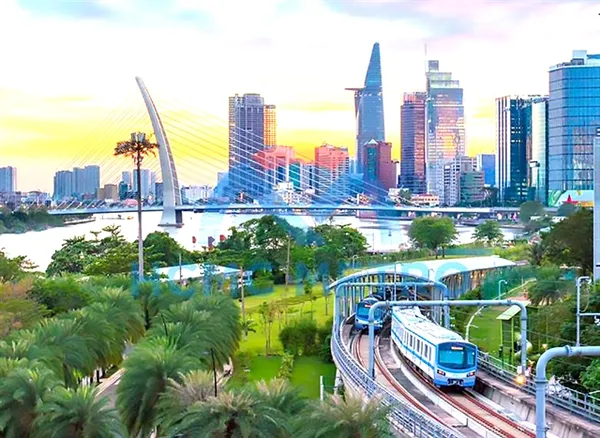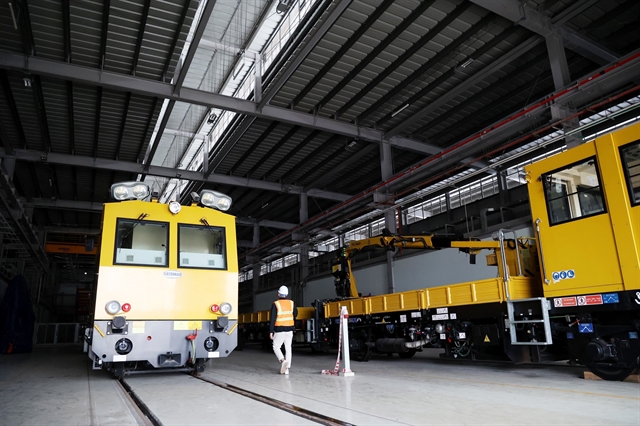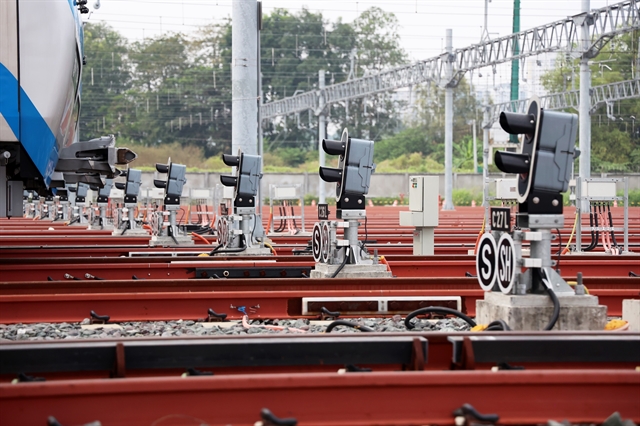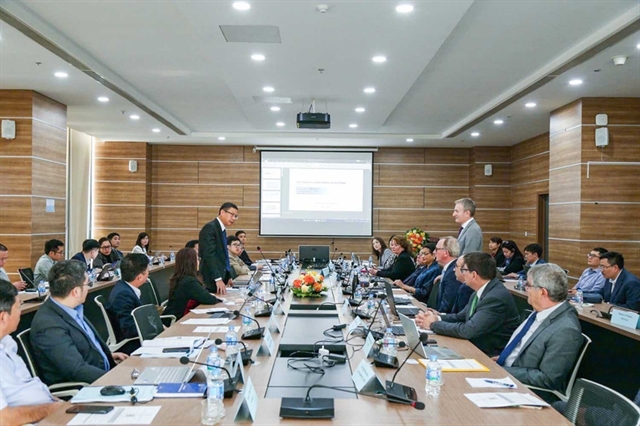 Life & Style
Life & Style
.jpg)
 |
| The Long Binh Depot in Long Binh Ward, Thủ Đức City in HCM City. It is considered the 'brain' of the metro where trains are assembled, repaired and maintained. — VNA/VNS Photo Hồng Đạt |
HCM CITY — Behind every safe metro train is a team of maintenance technicians. They are like silent 'doctors' who take care of the trains’ health, checking, detecting and handling any technical problems to ensure the trains operate smoothly.
Deep inside the Long Bình depot in Thủ Đức City, the metro maintenance team carries out its work.
They are considered 'doctors without white coats", diligently inspecting and repairing train components every day, from engines to control systems.
Keeping metro trains 'healthy'
The maintenance team is an indispensable part of the operation process of metro line No 1.
They include highly qualified engineers, fully equipped with the necessary knowledge and skills to perform periodic maintenance and troubleshoot problems.
All staff here wear protective gear, their faces always showing high concentration.
Lưu Cao Huy, 28, Head of the Locomotive - Carriage Team, told the Thanh Niên (Young People) newspaper that metro maintenance and repair was a continuous process.
Every day, when the metro line has not yet started rolling, the maintenance team thoroughly inspects the equipment from the beginning to the end of the line, checks the electrical system, the signal system and many other important stages such as cleaning the rails and cleaning the wheels.
Huy's team conducts daily, weekly and monthly inspections according to regulations.
Huy said that the maintenance team had many members, divided into five main groups, including signalling, construction, electrical, locomotive and carriage team and groups who look after the stations and building utilities. Each is in charge of a separate task, working together to ensure the safe operation of the railway.
"If just one part is not guaranteed, it will lead to many consequences, affecting the entire metro line. The locomotive and carriage team is responsible for ensuring that the train operates properly, on time and does not endanger passengers," said Huy.
For normal vehicles, there will be a periodic maintenance schedule such as every few months or once a year. But the metro must be checked regularly because problems can happen at any time.
“The metro is not only a mechanical system but also integrates a complex signal information system. Just a small mistake can seriously affect the entire system," said Huy.
Inside the maintenance factory, all the machinery and equipment are state-of-the-art, requiring the maintenance team to have deep expertise and proficiency in operating and mastering them.
That is why members doing maintenance work like Huy need to be trained continuously, study documents carefully and deeply, and participate in technology transfer training courses.
Man masters machine
 |
| The traffic light system at the Long Binh depot. — VNA/VNS Photo Hồng Đạt |
A team's workday begins with checking the maintenance plan and assigning specific tasks to each member.
Every step in this process must ensure absolute safety for both people and the train.
Normally, each test session typically last about six hours, including visual inspection combined with measurement and analysis of specific parameters using specialised machinery.
The inspection process includes two steps - checking electric systems and checking non-electrical components.
Checking electric systems is checking the sound systems, speakers, controls and air conditioning meticulously. Checking non-electric components includes inspecting the train's roof, steering column, and cleaning dust.
There are also many systems under the train such as signal information, bogies, braking systems, checking non-electric mechanical systems to ensure they meet standards.
“If we find any problems, we will handle them immediately," said Huy.
As a team leader, Huy sometimes feels pressured because of the great responsibility. He himself was always proud to contribute to a large project of the city, but along with that came high demands on expertise and skills.
"Metro No 1 project is a very new project in our country Việt Nam, all the machinery and equipment systems here are almost the most advanced in the world, so we have to learn and improve every day to receive and master them,” said Huy.
“In the future, the metro will develop even more, so anyone who studies engineering will have the opportunity to work here. The important thing is to have a foundation of knowledge, then come here to be trained again, there is no limit on age or gender because the maintenance profession is very broad," he said.
To become the head of the locomotive and carriage team at such a young age, Huy said that he had worked hard to study and improve himself since his school days.
Many years ago, when the metro line No 1 project was just laying the first foundations, he was determined to take the entrance exam for the metro train major at the HCM City University of Transport.
"At that time, I saw that many countries had developed metro systems, so I also wanted and aspired to work in this field one day. Coming to HCM City, seeing the metro’s foundations, I had more confidence. After many years of studying and waiting, now I can work here, fulfilling my dream," Huy said proudly.
Currently, the maintenance team of metro line No 1 is trained alongside the contractor Hitachi and Japanese experts. Each project has its own specific equipment, machinery and technology. Therefore, receiving training, technology transfer and continuous learning are prerequisites for the maintenance staff to master the metro system.
Metro line No 1 is not only a turning point of the urban railway industry in HCM City, but also demonstrates the ability to learn and master technology of the Vietnamese technical team.
Without them – the silent 'doctors' inside the Long Binh depot, the metro line would not be in healthy conditions to serve millions of people and foreign tourists. — VNS
.jpg)
.jpg)


